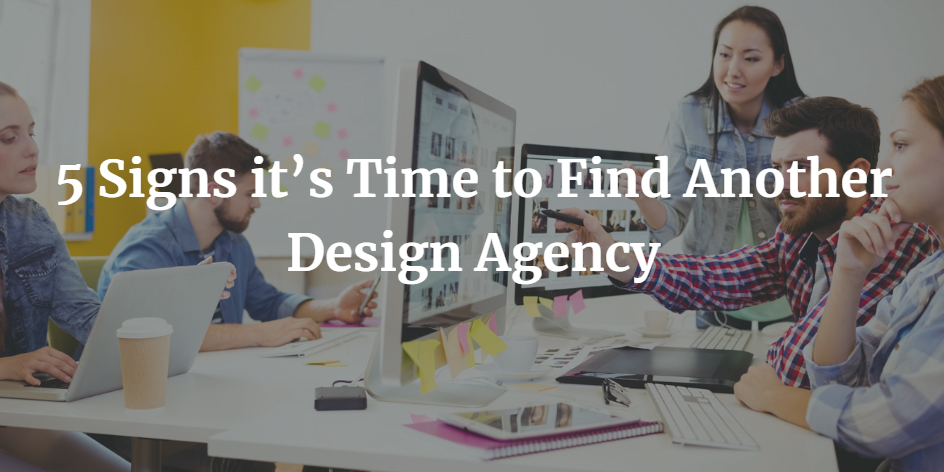5 Signs it’s Time to Find Another Design Agency
For many small businesses, developing a relationship with a digital design agency that understands what they do and what they’re trying to accomplish is a crucial step towards sustainable growth. However, it can also represent a huge investment, and it can be critical to pair up with the right one, especially in the early stages when your income streams may be limited.

If any of the signs below apply to your current design agency, chances are you should be looking for a new one.
1) They don’t understand new technology and trends
New technology and trends pave the way to entirely new ways of experiencing the world around us. In the context of web design, for example, the widespread use of mobile phones and tablets for browsing the internet has led to the widespread use of the now ubiquitous “single column” layout. The use of gradients in icons accelerated in the early 2010s as these same devices had to be more useable to people who were then just getting used to touchscreens. Flat design slowly came back into the mainstream later in the decade, as people had become acclimated to their now indispensable touch screen devices.
You can’t always expect everyone to know what the next big thing is, but you should definitely expect your design agency to have at least a grasp of where technology is headed and how the users of your product or service may respond to it. If your agency is still acting as if it was 2013, then you really should consider finding a new one.
2) You have to keep repeating yourself
It’s rare to have a completely trouble-free experience with any outsourcer, especially in a field with as much subjectivity as design. However, if after a few months you find that you have to keep reiterating certain requirements or that you have to keep sending back work for the same reasons, you might have cause to work with another company.
This communication gap can often be an issue when cross-cultural barriers are concerned. However, in our experience at least, most of the time, it can happen simply because the agency failed to listen to your specific requirements. The former is definitely something that can be worked on. But the latter is a huge red flag.
3) They’re unable to give you plans that help you reach your goals
In an ideal world, every agency you work with will be able to meet or exceed the goals you set for them. Unfortunately, an agency is perfect. This is especially true in an industry where it seems everyone’s overinflating their capabilities or outright misrepresenting themselves.
That isn’t to say, however, that you should just accept things as they are. Any agency worth its salt should at least be able to deliver something that brings you closer to your intended goals. That at least means they understand what you need, and perhaps you could still readjust your goals and work things out.
But if their recommendations don’t even help you meet your targets, that may be a sign they may not have a single clue about what you actually need. In that case, why keep paying them?
4) They don’t meet their obligations
If they miss too many deadlines, act surprised when you mention a deadline to them, or have continual internal issues that hamper the timely submission of work, chances are you should start shopping around for another agency.
Good agencies will be able to set expectations and tell you when they believe goals may not be met on the intended date. The agency’s internal issues, while unfortunate, are not your responsibility, and the agency should have taken that possibility into account before they agreed to work for you.
5) They don’t know the difference between “good design” and aesthetics
Art and design are related but fundamentally different fields. While both involve the communication of ideas and are often meant to elicit emotional responses, art attempts to deliver an artist’s vision while design is meant to deliver a certain function.
Good design is about functionality. While it can be aesthetic and create positive emotions, these are either in the service of the core function, or a happy side effect of the same.
Let’s take web design as an example. In the context of a website, that function can be more sales, more emails captured, lower bounce and cart abandon rates and so on. It’s one thing to make a pretty website, but a completely different thing entirely to make a website that gives you the types of responses you want.
If you’re looking for a way to grow your business, drive more traffic to your site or simply need a digital design agency in San Francisco, check out 500 Designs.
